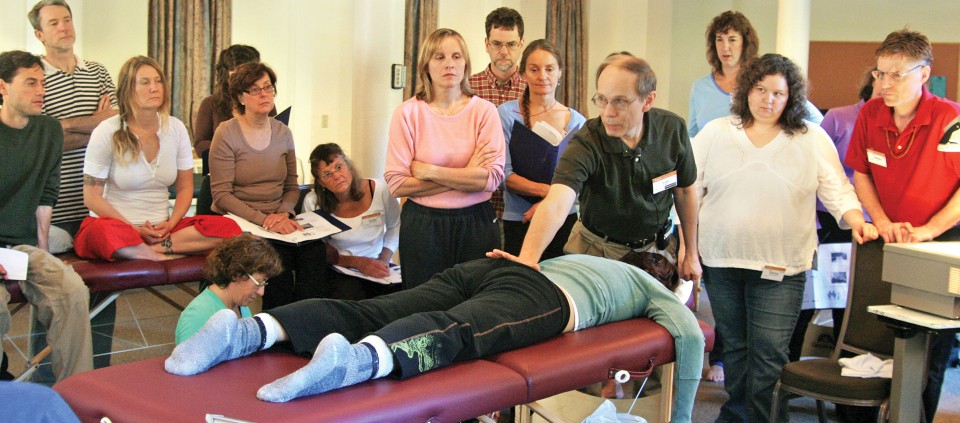The 3 Keys to Relieving Pain with Positional Therapy

What is Positional Therapy (PT) and how does it work? The problem of chronic pain in our bodies is complex and far-reaching. As it applies to musculoskeletal pain, it encompasses many different areas, such as the head, neck, back, limbs, specific joints and bones, and even chronic, non-specific, widespread tissue pain—just to name a few.
Yet, despite the wide-ranging conditions and symptoms, all types of musculoskeletal pain share similar underlying mechanisms, manifestations, and potential treatments. In the final analysis, most pain is foundational, resulting from imbalances in a musculoskeletal system that is out of alignment. There is a great deal of research that presents evidence that the root causes of many neuromuscular pain patterns are biomechanical misalignments caused by muscle imbalances. We are in pain because we are misaligned or “crooked.” Therapists often refer this as the muscles being “locked long” or “locked short.” If you think you have good posture, you probably do not, as misalignments are often not obvious to the untrained eye.
PT skillfully combines the application of two well-established and clinically recognized neuromuscular treatment approaches: strain-counterstrain (SCS) and muscle energy technique (MET), specifically developed to address chronic and acute neuromuscular pain, and improve muscular-skeletal function and range.
This comprehensive program of recovery from neuromuscular pain, both chronic and acute, is a form of manual medicine that addresses both the symptom and the root cause for long-lasting relief. It is safe and effective and causes no pain during treatment. Many people will benefit from a private session, but it is also easy to perform on yourself.
There are three components to PT that are essential for success in relieving pain.
1. The root cause must be identified. The heart of PT lies in getting the pelvis, “the foundation” of the body, back in alignment. If the foundation of a house is not structurally sound, the imbalance will show up throughout the entire structure. The same is true in our body. If the pelvis is out of alignment, it will affect everything from head to toe. The root causes of a misaligned pelvis are muscle imbalances.
This simply means that some muscles are too short (typically from overuse) and some muscles are too long. In both cases, the muscles will feel tight and sore. The short muscle is contracted and tight, and the long muscle is overstretched and tight, much like an overstretched rubber band. The muscles that are overstretched actually feel more painful and three or four times times tighter than the short muscle. These muscles that are out of balance can cause a skeletal misalignment. Often that will lead to disc problems, nerve impingements, trigger points, low-back pain, and/or joint dysfunction.
2. The muscle imbalances need to be treated. MET and strain-counterstrain are neuromuscular techniques that were developed in the 1950s and can be applied to accomplish the rebalancing. MET is a very powerful tool to quickly and easily lengthen tight, constricted muscles and restore range of motion. It is a form of stretching using active isometric contractions. Strain-counterstrain is also applied to tight, constricted muscles. In this technique, the affected area is passively shortened and held for 60 to 120 seconds, thereby allowing the muscle fibers to effectively reset and return to neutral.
3. The muscles must be trained to stay in balance. One of the most important parts of this therapy is that the client must become an active participant in their own healing process. This involves daily stretching, strengthening, and slackening of the muscles to train them to stay in balance until the pain is eliminated. These easy-to-do exercises require about 20 minutes or less a day. Results are sometimes achieved in a few days, but it can take up to 16 weeks for the body to rebalance itself.
Lifestyle changes will also speed the healing process. These can include proper sitting, driving, and computer positions. These ergonomic suggestions shorten the recovery time.
With a focus on the close relationship that musculoskeletal imbalances play in the development of general and localized pain, PT delivers simple, therapeutic self-care techniques that help identify and correct muscular imbalances and effectively hone in on many of the root causes of pain.
Find out about upcoming programs with Lee Albert at Kripalu.
© Kripalu Center for Yoga & Health. All rights reserved. To request permission to reprint, please email editor@kripalu.org.
Lee Albert, NMT, creator of Integrated Positional Therapy, is an author and a neuromuscular therapist and yoga instructor trained in orthopedic massage, positional therapy, and yoga therapy.
Full Bio and Programs